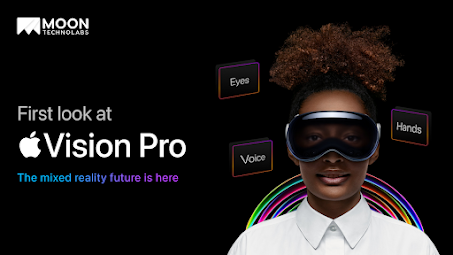Apple eyes business as a prime market for the Apple Vision Pro
While most people use terms like augmented reality, virtual reality or even metaverse (thanks, Meta), Apple prefers to define the genre in its own terms, referring to the Apple Vision Pro as spatial computing or mixed reality. In its typical fashion, Apple is trying to define a new category. Whatever you call it, the company certainly sees the AVP as a business device alongside its more obvious consumer use cases around gaming, media consumption and good old fashion web surfing. Certainly it has the potential to transform the online shopping experience.
On Apple’s quarterly earnings call with analysts earlier this month, CEO Tim Cook emphasized that he was seeing lots of interest in the enterprise. “Leading organizations across many industries such as Walmart, Nike, Vanguard, Stryker, Bloomberg and SAP have started leveraging and investing in Apple Vision Pro as their new platform to bring innovative spatial computing experiences to their customers and employees,” Cook said. Notice that reference to spatial computing.
Cook cited ideas for business like everyday productivity, collaborative product design and immersive training. The ability to have a so-called infinite desktop is key to the productivity piece: Users can open multiple programs and move them around a huge palette that gives new meaning to extra screen real estate. Whether these devices are good for content creation, however, remains an open question.
With 600 apps announced last week, and more expected over time, the Apple Vision Pro lets people access the same apps that they are used to using on MacOS and iOS, but tuned to the visual experience of the device. To select an app, users simply gaze at the icon in a similar interface as Apple’s other apps, like Safari, Photos, Messages and Mail. As the gaze focuses on the icon, it lights up and users pinch a finger and thumb together to select it.
One of the big differences between this and earlier devices is that even though it goes over your eyes, you can see through it. Apple deliberately designed it that way, letting the user see the world, and other people see the user’s eyes, so there wasn’t as much separation between the two. The company believes that will alter the experience and perhaps generate new use cases.
Steve Sinclair, who is part of worldwide product marketing for Apple Vision Pro, says the company sees the device as an opportunity to explore new ways of interacting with software. “As our first spatial computer, it’s really given us a platform to build upon to create new spatial experiences,” he told TechCrunch. “We really believe that being able to bring information into your space while allowing you to stay connected to people around you is really important. And that has applications obviously from a consumer perspective but also from a business perspective.”
IDC analyst Ramon Llamas surveyed over 400 IT U.S.-based IT decision makers last year at the Apple Worldwide Developer Conference, and found there were several potential use cases, bearing in mind that this survey was conducted before people actually laid their hands on one. “I think we’re still trying to figure out use cases, especially when it has to do with B2B usage,” Llamas told TechCrunch. “About 56% use it for training, about 44% for customer facing retail experiences, and 43%-44% for collaboration.” Note that none of these use cases involves content creation.
Ray Wang, founder and principal analyst at Constellation Research, who has tried the device and is mostly positive about the experience, sees similar use cases. “We expect field service, training and customer experience to be the top use cases,” Wang said.







No comments